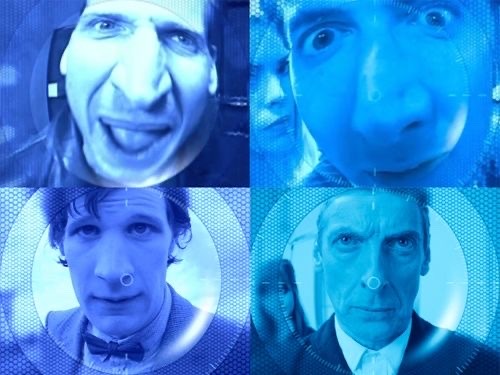You Can't See My Cute Dick Sorry :/

you can't see my cute dick sorry :/
More Posts from Shapeware and Others

Daniel Everett / Untitled / Photography / 2019
the viewer is the dalek. the director is placing the average viewer in the position of the marginalized viewer—their black, brown, immigrant, trans, muslim counterparts. saying to them: i hate you; you are a threat to our way of life; join us or die—but with moral complexity for your complicity. it is okay to shed your humanity when your enemy hates you as much as you hate them.

the doctor emotionally monologuing at the daleks and then it cutting to shots like this is one of my favorite parts of dw

Double comb, sailors love token, Mid Century.

Max Ernst (German, 1891-1976) - Quasi-feu le romantisme, oil on canvas, 33.20 x 24.30 cm (1960)

i want to know what "more closely related" means and how that came to be and why that matters and to who
as funny as it is to say, "there's no such thing as a fish" is not actually true
"science doesn't know what a fish is" is really not true
"fish" is not a monophyletic category. there is no common ancestor of everything that we call a "fish," and none of the things that we don't
"fish" is a paraphyletic category -- and a useful one! marine biologists use it! "fish" describes a general body plan and lifestyle. it is useful to be able to talk about coelacanths and tuna in a shared category, though coelacanths are more closely related to us than to tuna.
where this bugs me is the repetition of the idea that "scientists" are hidebound and uncreative, unable to comprehend anything that doesn't conform to a specific idea of categorization -- when this is fundamentally untrue! we know perfectly well what a "fish" is. the fact that it's a paraphyletic group is only confounding to pop science, as a funny factoid, not to anyone who actually understands what a paraphyletic group is.
i'm allowed to do whatever harmful bullshit i want because billionaires have yachts and planes

St. George and the Dragon, from Red Magic by Kay Nielsen (1930)
people shouldn't have scents, nor textures
-
 atlaschaoscollection liked this · 3 months ago
atlaschaoscollection liked this · 3 months ago -
 coolbreezesus liked this · 4 months ago
coolbreezesus liked this · 4 months ago -
 redstranger81 liked this · 4 months ago
redstranger81 liked this · 4 months ago -
 p1ain-potato liked this · 4 months ago
p1ain-potato liked this · 4 months ago -
 louderlaughter liked this · 5 months ago
louderlaughter liked this · 5 months ago -
 amyashen liked this · 5 months ago
amyashen liked this · 5 months ago -
 bbygrills-world liked this · 5 months ago
bbygrills-world liked this · 5 months ago -
 the0belisk liked this · 5 months ago
the0belisk liked this · 5 months ago -
 youmight-know liked this · 5 months ago
youmight-know liked this · 5 months ago -
 sorryforbleedingonyourshirt reblogged this · 5 months ago
sorryforbleedingonyourshirt reblogged this · 5 months ago -
 strongcat liked this · 5 months ago
strongcat liked this · 5 months ago -
 sandhillmuppet liked this · 5 months ago
sandhillmuppet liked this · 5 months ago -
 angeltearsxxx reblogged this · 5 months ago
angeltearsxxx reblogged this · 5 months ago -
 twotonerat liked this · 5 months ago
twotonerat liked this · 5 months ago -
 lavender-sub-boy reblogged this · 5 months ago
lavender-sub-boy reblogged this · 5 months ago -
 jonesposting liked this · 5 months ago
jonesposting liked this · 5 months ago -
 lisafrankzane liked this · 7 months ago
lisafrankzane liked this · 7 months ago -
 d3monl0ver liked this · 7 months ago
d3monl0ver liked this · 7 months ago -
 femdeath liked this · 7 months ago
femdeath liked this · 7 months ago -
 yasuhostan420 reblogged this · 7 months ago
yasuhostan420 reblogged this · 7 months ago -
 yasuhostan420 liked this · 7 months ago
yasuhostan420 liked this · 7 months ago -
 revelataur liked this · 7 months ago
revelataur liked this · 7 months ago -
 incisedwound liked this · 7 months ago
incisedwound liked this · 7 months ago -
 shapeware reblogged this · 7 months ago
shapeware reblogged this · 7 months ago
